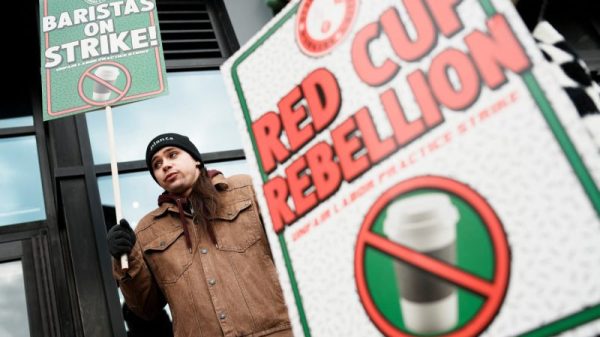DENVER — This week, the effort to keep Donald Trump off the ballot got its most intense test yet in a Colorado courtroom, providing insight into the strengths and weaknesses of other legal challenges that will be heard in the months ahead.
The lawsuits seek to bump Trump off the ballot under Section 3 of the U.S. Constitution’s 14th Amendment, which bars people from office if they engage in an insurrection. The voters who brought the Colorado case argue Trump engaged in such an insurrection by inciting the Jan. 6, 2021, riot at the U.S. Capitol as he sought to overthrow the 2020 election and stay in office. Trump has insisted he did no such thing.
The cases are unlike any in history against a candidate for president and present several issues that have been rarely addressed by courts. The case before Denver District Judge Sarah B. Wallace is unique because it featured a week-long hearing with legal scholars, police officers and members of Congress. Arguments wrapped up Friday, and Wallace will hear closing arguments on Nov. 15. She has said she will issue a decision soon after that, and the losing side is expected to appeal to the state Supreme Court.
Rulings in other states could come before long. The Minnesota Supreme Court heard arguments Thursday. In Michigan, courts are considering a dueling set of lawsuits. If any state bars Trump from the ballot, the U.S. Supreme Court is expected to weigh in on the issue. Its ruling would be binding on all states.
Here’s what we learned about these sorts of challenges from the Colorado hearing:
Legal scholars are divided on whether Trump could be barred from running, but even supporters of the notion have said those bringing the challenge have an uphill climb. Trump has several arguments for why he should appear on the ballot, and if he wins any one of them he will stay on the ballot.
Trump and his allies have argued that Section 3 does not apply to Trump specifically and presidents generally, that the attack on the Capitol did not qualify as an insurrection and that Trump did not incite violence or engage in an insurrection. And, they note, Section 3 bars candidates from holding office, not running for office. That means it’s premature to make a decision on whether Trump is qualified to serve as president again, they say.
What’s more, they say that courts don’t have the authority to determine who is eligible to serve as president because that job belongs to Congress. The judge seemed to rebuff that idea on Friday.
“In general, I think that’s exactly the job of the court, to interpret the Constitution,” she said.
Much of the case hinges on Trump’s words. Throughout the trial, those bringing the lawsuit have played well-known clips of Trump, including ones where he told the far-right Proud Boys to “stand back and stand by,” urged his supporters on Jan. 6 to “fight like hell” and claimed there were “very fine people on both sides” at a 2017 rally that featured white supremacists and counterprotesters.
Trump’s Twitter feed has also been crucial to the case. In December 2020, he urged his supporters to come to the Capitol on Jan. 6, telling them, “Be there, will be wild!” Amid the violence at the Capitol that day, Trump tweeted that Vice President Mike Pence lacked courage because he wouldn’t stop the certification of Joe Biden’s victory. The crowd was hostile to Pence, with some chanting, “Hang Mike Pence.”
Trump attorney Scott Gessler told the judge Trump’s speeches and tweets did not incite violence and could not be used to knock him off the ballot because of his First Amendment right to free speech. Wallace declined to dismiss the case midtrial but said she would continue to consider free speech concerns before issuing her final ruling in the case.
Throughout the hearing, the judge kept the focus tightly on Trump, declining to accept evidence about speeches Trump attorneys Rudy Giuliani and John Eastman made on Jan. 6. They spoke from the same stage as Trump, with Giuliani calling for “trial by combat.”
It’s unclear what the judge makes of Trump’s comments and how far-right extremists understood them.
Peter Simi, a Chapman University associate professor of sociology who has studied political extremism for decades, testified that Trump’s speech was a call to violence. The judge asked him whether he would still consider it a call to violence had the crowd at the Capitol remained peaceful. He said he would.
“What worries me with all of this is it’s all kind of in 20/20 in hindsight,” the judge said.
Some of Trump’s witnesses testified he didn’t want to see violence on Jan. 6 and supported having thousands of National Guard troops at the ready, even though he did not send help for hours. On cross examination, some of them damaged their credibility or gave testimony that helped those bringing the case.
Former Trump spokeswoman Katrina Pierson acknowledged making jokes about the attack within 24 hours of the riot, testifying she thought it was “hysterical” that someone had hauled away the lectern for then-House Speaker Nancy Pelosi (R-Calif.).
Amy Kremer, the chairwoman of Women for America First and one of the organizers for Trump’s event on Jan. 6, insisted there was no insurrection that day and during cross examination contended without evidence that the election was stolen. “We don’t know who stole the election,” she testified. “I mean, it happened in a number of states.”
Seeing her comments were not good for Trump’s case, Trump’s attorney sought to cut off her testimony. The judge allowed her comments, saying, “This goes to credibility.”
Perhaps Trump’s most unusual witness was Rep. Ken Buck (R-Colo.), who at times has been at odds with Trump. Buck on Wednesday announced he would not run for reelection and criticized Republican leaders for downplaying the attack on the Capitol and lying about the 2020 election. Trump welcomed the news of Buck’s departure, calling him weak and a Republican in name only.
A day later, through his attorneys in Colorado, Trump sought Buck’s assistance by putting him on the stand.
Some of Buck’s testimony may have helped the voters bringing the case because he said the attack on the Capitol was meant to interfere with congressional proceedings — an ingredient for an insurrection, according to those bringing the case.
The judge allowed large portions of the House investigation into Jan. 6 to be included in the court record — material Trump hoped to keep out.
Tim Heaphy, the chief investigator for the House’s review of Jan. 6, testified that law enforcement was flooded with intelligence about potential violence on Jan. 6 soon after Trump posted his “will be wild” tweet.
“That was the spark, really, that ultimately erupted in violence on January 6th,” he said.
Buck, who appeared by video from Washington, tried to cast doubts on the committee’s work, saying congressional investigations are inherently political. “It isn’t purely a search for the truth,” he said. “It is a political exercise that is being engaged in to create information for elections.”
The attorneys for the voters bringing the case sought to discount that notion and asked whether he had heard Pelosi say the investigation was done for political reasons. Buck laughed and said he had not spoken to her.
“But I have been present for nine years in this place,” Buck testified from his congressional office. “And it’s one of the reasons why I’m looking forward to not coming back.”



























